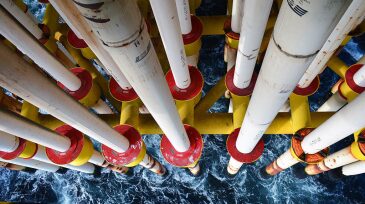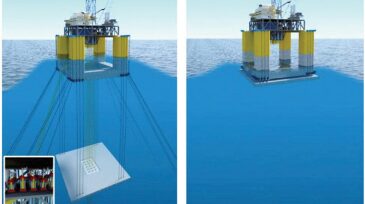offshore
-
Shallow-water offshore production began before 1900 and continues to be important. Technology to maximize economic production from shallow-water fields can be adapted from onshore or deepwater technologies.
-
This paper discusses the use of clamp-on sonar flowmeters to minimize losses associated with well testing and to gain the subsequent benefits seen with respect to production optimization and well deliquefication.
-
Riser slugging can restrict production and cause problems for downstream equipment. This paper discusses a simplified modeling approach to control of riser slugging.
-
Semisubmersible floating production systems (SFPSs) with steel catenary risers (SCRs) are attractive field-development solutions, especially in deeper water of Western Australia. However, SCR design is challenging in the offshore Western Australia environment because of severe cyclonic environments.
-
Saudi Aramco is on a mission to increase the amount of seismic data that it collects by fourfold, while reducing costs and acquisition time by half of what it spends today.
-
The offshore industry has taken another step toward opening up new deepwater frontiers to exploration with Maersk Drilling ordering the first 20,000-psi blowout preventer (BOP) made by GE Oil and Gas.
-
This paper summary focuses upon reporting new research-and-development (R&D) initiatives related to subsea processing and boosting offshore Brazil.
-
This paper focuses on the applicability of subsea-processing technology (SPT) using multiphase pumps (MPPs) to develop marginal fields commercially.
-
Subsea processing is a significant technology that presents and will continue to bring many challenges and opportunities to the industry.
-
This paper summarizes the results of a qualification program that included a multiphase, subsea-separation system for shallow-water applications.










